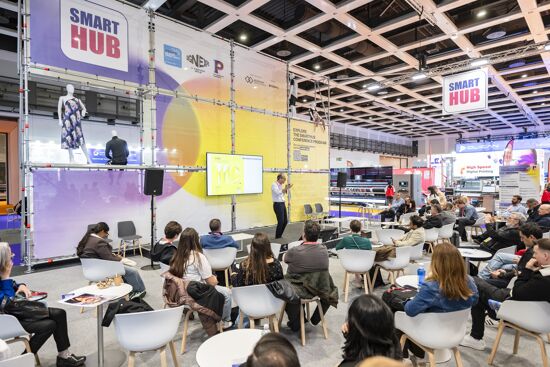Changing bad habits

Laurel Brunner discusses the benefits of publishers working with printers to lower their negative impact on the environment. Laurel writes that in other print sectors like labels and packaging, signage and commercial print innovators are currently exploiting digital on demand production and delivery.
If we wanted to point a finger at the worst offenders when it comes to environmental inefficiency, which print sector would we choose? Labels and packaging produce phenomenal quantities of waste. Commercial print is also responsible for sending tonnes of paper for landfill or incineration. The signage business also produces a lot of material that once it is used, is mostly not reused so it turns into trash. But in all of these cases there are mechanisms for recycling or reuse and support for the circular economy, at least in principle. Users of the prints including consumers have options for sending material for recycling.
But book publishers can rightly claim the worst offender crown, because pulping of unsold books is built into their business models. And they do not have a habit of accurately estimating print volumes. It’s as if no one has noticed that the price per copy afforded by scale is counter to an environmentally responsible process. The thinking appears to be that because per copy prices get cheaper the more you print, it is ok to not take a more careful approach to estimating.
Even if authors want to claim their unsold copies in order to give them to schools, libraries, charities and second-hand shops, they cannot unless they buy the copies outright. There is no mechanism through which publishers large and small support reuse and redistribution. From the very large such as Penguin Random House through to the minnows such as Unbound, authors who want to take responsibility for the reuse of their books are forbidden from doing so unless they buy the copies themselves.
Book publishers are in the game to make money, just as pretty much every other print buyer is. It’s understandable that unwanted volumes should be turned into a revenue stream whenever possible. But this outmoded model has to change. There are two obvious flaws in this business model in the context of today’s production technology options. Not least of these is the reluctance to upgrade book production, ordering and distribution to a print on demand model. That takes money of course, but book publishing is highly profitable for the majors who are best place to drive change. And there doesn’t even seem to be a move towards hybrid production, whereby both conventional analogue and production on demand via digital printing are supported. It is a disgrace.
What the majors and the minors should be doing is investing in their knowledge of what is possible with print on demand. Working with networks of print service providers would allow publishers to produce books close to their point of use, either end users or the local bookshops. Using variable data technologies they could even add value through personalisation or alternative endings say, or long and short versions. It seems so obvious. It is tragic that developers have created so many amazing opportunities for new book publishing and reuse models that are ignored. In other print sectors such as labels and packaging, signage and commercial print, innovators are exploiting digital on demand production and delivery. Book publishers meanwhile stick with what they know and what they can exploit, environmental impact or not.
Source information: This article was produced by the Verdigris Project, an industry initiative intended to raise awareness of print’s positive environmental impact. This weekly commentary helps printing companies keep up to date with environmental standards, and how environmentally friendly business management can help improve their bottom lines. Verdigris is supported by the following companies: Agfa Graphics, EFI, Fespa, Fujifilm, HP, Kodak, Miraclon, RicohSplash PR, Unity Publishing and Xeikon
Header caption: Photo by Tom Hermans on Unsplash
Topics
Interested in joining our community?
Enquire today about joining your local FESPA Association or FESPA Direct
Recent news

Industry Experts Explore the Evolution of Smart Manufacturing in the Textile Industry
A FESPA SmartHUB roundtable at Personalisation Experience 2025 discussed smart manufacturing's transformative impact on the textile industry. Experts highlighted the shift to on-demand customisation, driven by digital printing, data analytics, and automation. Key takeaways included enhanced machine control, significant waste reduction through intelligent software and colour management, and improved sustainability via energy efficiency and near-shoring, ensuring agility and environmental responsibility in textile production.

FESPA 2025 gathers leading visionaries from across the speciality print industry in Berlin
FESPA Global Print Expo 2025, European Sign Expo and Personalisation Experience (6 – 9 May 2025, Messe Berlin, Germany) welcomed Visionaries from across the speciality print industry to shape the future of print, develop forward-thinking business strategies, and explore innovative ways to translate emerging industry trends into tangible growth opportunities.

Exploring Cutting-Edge Textile Printing Innovation with Adobe Print Engine 7
Adobe PDF Print Engine 7, launched at FESPA Global Print 2025, significantly advances textile printing. Debbie McKeegan shares how it automates non-white substrate management and RGB colour handling, expands colour gamuts with in-RIP multicolour transparency blending, and streamlines workflows for efficiency and sustainability. This update boosts customisation, reduces waste, and positions businesses at the forefront of digital print innovation.

FESPA Global Print Expo 2025 - Overall Highlights
FESPA Global Print Expo, Europe's leading print and signage exhibition returned to Messe Berlin from 6 - 9 May 2025.